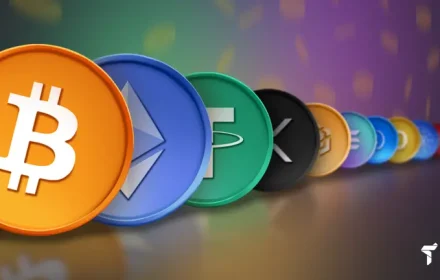
On our website you will find trading forecasts for Efirium based on thorough analyses of market trends and historical data
Read more
The world of digital assets is rapidly changing, and 2025 is becoming the point where innovations turn into strategy. Investors are increasingly asking themselves which cryptocurrency is the most promising, as the market has moved beyond speculation and become part of the global economy. New technologies, institutional interest, and regulatory development create unique opportunities for …

The final October lineup shows that the top cryptocurrencies of the week are formed based on clear market segmentation. Successful assets prove their value not only by price growth but also by their ability to dominate in their niche, whether it be scalability, decentralized lending, or privacy protection. The analysis of the leaders’ structure reflects …

Cryptocurrency forecasts for 2026 are shaping the contours of a new financial cycle. The digital asset market is emerging from turbulence and moving towards a mature phase — with growing trust, strengthened regulation, and the emergence of stable investment instruments. Analytics show that the vector is shifting from speculation to structured strategies, where transparency, liquidity, …

Passive income through cryptocurrencies is forming a new financial layer at a time when digital assets are emerging from a turbulent cycle and entering a phase of orderly growth. In 2025–2026, the sector demonstrates acceleration: the capitalization of the global market stabilizes above the mark of several trillion dollars, regulators of major countries are implementing …

The shutdown in the USA turns government finances into a zone of turbulence. The suspension of government structures’ work is not limited to closing museums or delaying officials’ salaries. It signals to the markets that the world’s largest economy is losing control during a political conflict. During such periods, investors look for new capital protection …

The digital asset market entered 2025 with new rules of the game. Investors and traders no longer rely solely on loud names but analyze real liquidity, regulatory transparency, and platform security. This is why the rating of the best crypto exchanges in 2025 by CoinGecko and other reputable agencies has become a benchmark for choosing …
With the rise of decentralised finance (DeFi), the demand for ETH is expected to increase as many protocols run on this platform
With increasing interest from institutional investors, such as hedge funds and corporate
Moving to Ethereum 2.0 using the Proof-of-Stake (PoS) consensus mechanism can significantly improve scalability
Positive regulatory changes may favour growth, while strict measures may cause market instability
Efirium is truly a game changer for investors, opening up access to decentralised finance and innovative projects. Its unique ability to support smart contracts creates the foundation for decentralised applications (dApps) that can function without intermediaries
